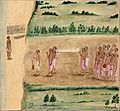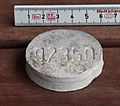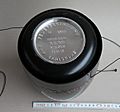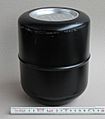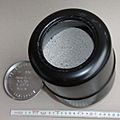Cremation facts for kids
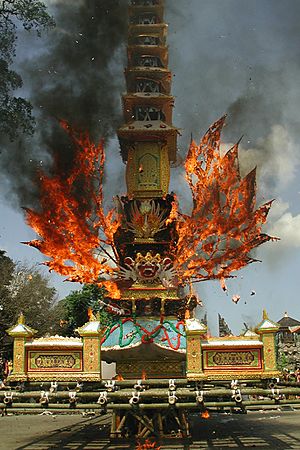
Cremation is when a body is burned after a person has died. It's a common way to say goodbye to someone instead of burying them in the ground. The special place where cremations happen is called a crematorium or crematory.
Many religions allow cremation. These include Christianity, Jehovah's Witnesses, Buddhism, Hinduism, Jainism, Sikhism, Shinto, and Neopaganism. However, some religions do not encourage it. Judaism and Mormonism usually don't approve of cremation. Islam, Neo-Confucianism, and Zoroastrianism also tend to disapprove.
Contents
What Happens to Ashes After Cremation?
After cremation, the remains are often called ashes. These ashes are given back to the person's family. The family then decides what to do with them.
Keeping or Burying Ashes
Often, the ashes are placed in a special container called an urn. This urn can then be buried in a cemetery, much like a coffin. Many religions believe ashes should be handled with respect. In places like Scandinavia, Japan, and Thailand, it's common to bury urns in a family grave. This type of grave holds the remains of many family members.
Sometimes, the person who died shared their wishes about what they wanted done with their ashes. The urn can be kept at home or placed in a special building called a columbarium. A columbarium is like a wall with many small spaces, or niches, where urns are stored.
Scattering Ashes
Another choice is to scatter the ashes. This means releasing them into the air or water in a place that was special to the person. Ashes can also be buried in the ground without a marker.
There are also some less common ways to scatter or use ashes. For example, ashes can be scattered using fireworks. They can even be sent into space or turned into a diamond. This is possible because both humans and diamonds contain a lot of carbon.
See also
Images for kids
-
Bronze container of ancient cremated human remains, complete with votive offering
-
An 1820 painting showing a Hindu funeral procession in South India. The pyre is to the left, near a river, the lead mourner is walking in front, the dead body is wrapped in white and is being carried to the cremation pyre, relatives and friends follow.
-
The trial of William Price confirmed that cremation was legal in the United Kingdom. He was himself cremated after his death in 1893.
-
A sketch from the Vrba–Wetzler report, showing the rough layout of the crematoria used at Auschwitz, one of the several Nazi German extermination camps in occupied Poland
-
A relic found amid the ashes of Chan Kusalo (the Buddhist Patriarch of Northern Thailand) is placed inside a chedi shaped vial and displayed inside Wat Chedi Luang in Chiang Mai.
-
Cremation allows for very economical use of cemetery space. Mini-gravestones in Helsinki, Finland.
-
Cremation of Mahatma Gandhi at Rajghat, 31 January 1948. It was attended by Jawaharlal Nehru, Lord and Lady Mountbatten, Maulana Azad, Rajkumari Amrit Kaur, Sarojini Naidu and other national leaders. His son Devdas Gandhi lit the pyre.
-
A Hindu cremation rite in Nepal. The samskara above shows the body wrapped in saffron red on a pyre.
See also
 In Spanish: Cremación para niños
In Spanish: Cremación para niños





